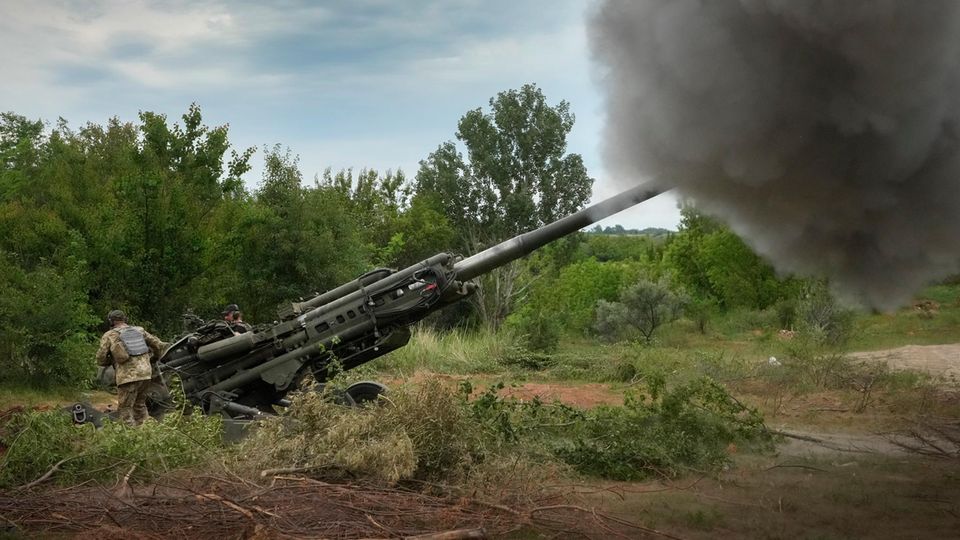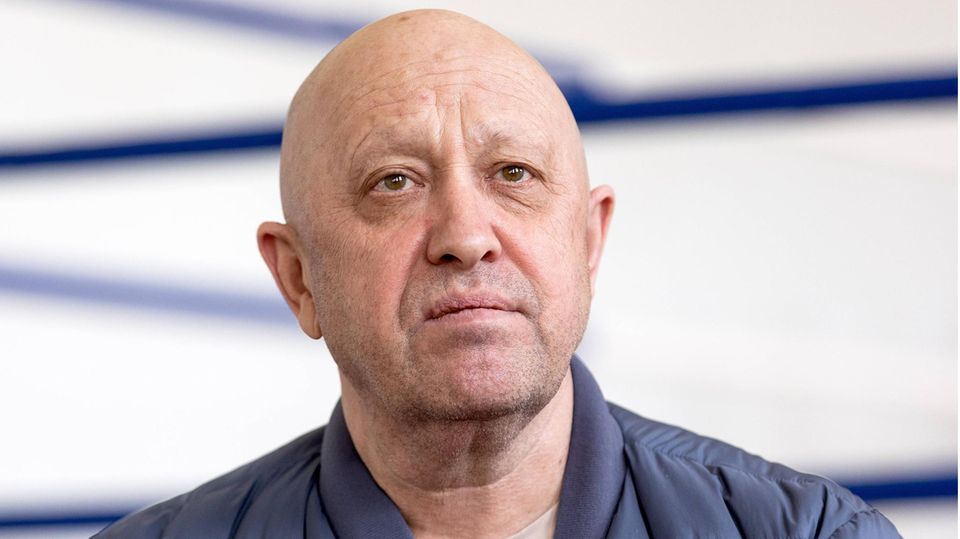analysis
war in Ukraine
Bloody and slow – but after the Wagner mutiny, the Ukrainian offensive is now making headway
Ukrainian soldiers next to an armored personnel carrier.
© Alex Babenko / DPA
After bloody fighting, the Ukrainians are advancing on the Russian main line of defense. Ukrainian Commander-in-Chief Valery Zalushny explained why progress is so slow and why Kiev now urgently needs US F-16 fighter jets.
The start of the Ukrainian ground offensive was disappointing. Instead of the expected “breakthrough”, Ukrainian troops suffered heavy casualties. In particular, the use of western armored personnel carriers (Bradley) and heavy battle tanks (Leopard 2) did not lead to a demonstration of the superiority of western equipment; the debris field from the crashed vehicles shattered this myth.
Ukraine made some gains, mostly fields in the so-called gray area and the liberation of some settlements, mostly so small that they can hardly be called a village. But in addition to the individual successes, other news prevailed. Many attacks failed with losses, and the Russians were often able to drive out the Ukrainians in a counterattack. But in the past week the picture has changed. In some places the Russians had to give in to constant pressure from the Ukrainians. Here the gains in terrain are deepening and there is no fear that Kiev’s soldiers will be thrown back, it is more likely that they will push the Russians back further. Even if it’s not about the radiant march through, which was previously painted with pleasure and in bright colors, these are hopeful perspectives.
Lasting rumours
Three zones are particularly interesting. At the destroyed Antonivka Bridge near Cherson, Ukrainian troops crossed the Dnieper and were able to form a small bridgehead. The terrain is well suited for a bridgehead. There is a narrow built-up area along the shore, but water bodies and swampy areas adjoin towards the Russian-controlled areas. There the Ukrainian troops were attacked by the Russians. But even Iskander rockets and the dreaded Tos-1a rocket launchers could not drive them away.
However, the Ukrainians could not route the Russian ground forces holding the eastern part of this settlement either. Nevertheless, this is a clear success for Kiev, simply because it forces Moscow to have military resources ready here and elsewhere that are lacking on the crucial front sectors.
South of Mala Tokmachka, the Ukrainians were able to get closer to the Russian positions in Robotyne, and settled in the wooded areas of the Balka Uspenivsʹka nature reserve (All names follow the spelling on Google Maps).
South of Vremevka, the Ukrainians were able to take the “little place” Rivnopil. Rivnopil consists of a grove of trees along a road and a few cottages. This place covered the Russian positions above the Mokri Valy River. The Russians did not succeed in recapturing Rivnopil, the Ukrainians were able to push them further away. Now they are trying to march to the village of Pryutnen and along the river to Staromlynivka. If Kiev conquers the town of Staromlynivka, the entire current Russian front cannot be held there in front of the main line of defense in the long term.
Success at Bachmut
And the Ukrainians also made important conquests near Bakhmut. They were able to cross a canal south of the city with individual tanks. There, only a few hundred meters separate them from the town of Klischchiivka. The town itself lies in a hollow and is difficult to defend. If the Russians are driven out of the higher fortified forest, there is a chance of reaching the main road TO513 and thus bypassing Bakhmut on a flank.
North of Bakhmut, the Ukrainians were able to continue to advance east of Orikhovo-Vasylivka. A little further south, the Ukrainians were stuck at a reservoir for a long time, but were now able to advance further. Here the goal is to cut off the already eroded Russian front salient along the M03 highway. The Russians are faced with the situation that, at least in perspective, the entire city of Bakhmut is under threat. The Wagner mercenaries were withdrawn from this section of the front and some were replaced by reservists who were not up to the fight in the long run.
But don’t get too excited. The profits are still small, all fights take place in an outpost area. Here is an explanation: Between the first posts of both sides there is a gray area in which nobody has permanent positions. This zone can be several kilometers wide, or as little as 1000 meters. Then follow simple positions, in between fortified strongholds and the like in several lines – the territory of the outposts. The Ukrainian incursions move in this zone. Only after that comes the first heavily fortified main Russian defense line. At Mala Tokmachka there are still two to five kilometers between the tops of the Ukrainian associations and this line.
Ukrainian supreme commander for the halting offensive
Both US Chief of Staff Milley and Ukrainian Commander-in-Chief Valeriy Zalushnyi stressed that Ukrainian troops were advancing every day, sometimes a few hundred meters, sometimes two kilometers. However, this statement needs to be understood correctly. It doesn’t mean that the Russians are being pushed back along the front line every day. They say: Every day the Ukrainians succeed in advances in some places on the front, but by no means in all places, and it is also not the case that the gains in one place are renewed every day and thus add up. In reality, progress is much more difficult.
Zalushnyj spoke to the “Washington Times” about the faltering offensive. In the interview, he primarily demanded the delivery of modern US F-16 fighter jets. Kiev’s old Soviet jets can’t move close to the front because the Su-35 fighter jets target them with their range of radar and air-to-air missiles. “I don’t need 120 planes. A very limited number would be enough. But they are needed. Because there is no other way. Because the enemy is using a different generation of planes. It’s like we’re going on the offensive now with a bow and arrow go.”
Permanent problem artillery
Another problem is Ukraine’s artillery inferiority. Zalushnyy said that Russia can use ten times more shells than Kiev every day and demanded corresponding supplies from the West.
However, NATO Secretary General Jens Stoltenberg said at the beginning of the year that the current ammunition consumption in Ukraine is many times higher than the production rate of the NATO countries. The supply of the Ukrainian armed forces is done from the stocks of the magazines, which are empty. This problem can only be solved if the West goes into a kind of partial war economy. All forecasts that Putin will run out of drones, rockets or grenades have so far not come true. It is apparently possible to circumvent Western sanctions and chip even disposable weapons such as the Lancet drones. In addition, the Russian armed forces are receiving “civilian” Chinese drones on a large scale, and recently Iranian artillery ammunition was sighted in Ukraine for the first time.
Source: WaPo





